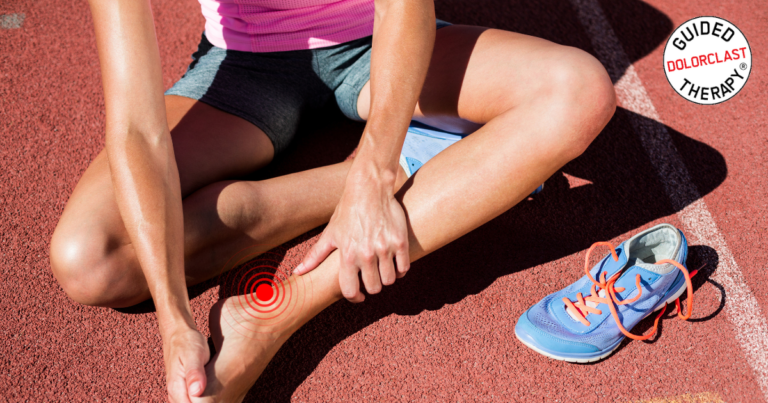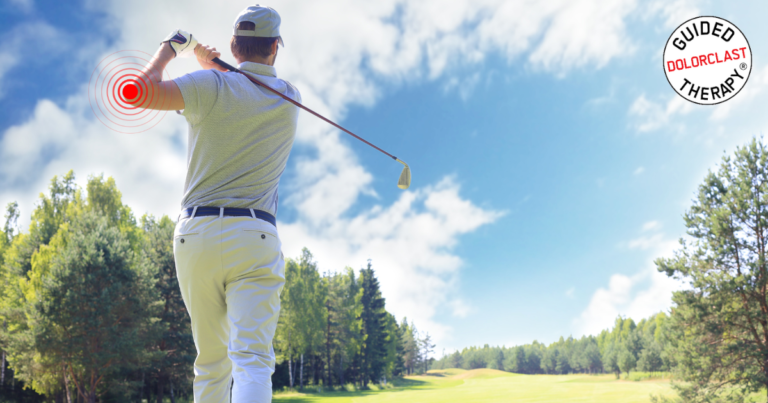Reference:
Xuejiao Guo1, Lin Li1,2, Zhe Yan1, Yunze Li1, Zhiyou Peng1, Yixin Yang1, Yanfeng Zhang1, Christoph Schmitz3, Zhiying Feng1
"rESWT, NSAIDs or both? Which approach works best when treating low back pain?"
1Department of Pain Medicine, The First Affiliated Hospital, Zhejiang University School of Medicine, Hangzhou, China;
2Department of Anesthesiology, Yuyao People Hospital of Zhejiang, Ningbo, China;
3Extracorporeal Shock Wave Research Unit, Chair of Neuroanatomy, Institute of Anatomy, Faculty of Medicine, LMU Munich, Munich, Germany
Background
Low back pain that cannot be explained by any recognizable or specific pathology is called a nonspecific low back pain (nsLBP).
Important facts about nsLBP:
- it is one of the most common reasons for consulting physicians around the world,
- incidence, as well as prevalence of this disorder is constantly rising, especially in industrialized countries.
This highly non-specific and multifaceted medical condition is very challenging in terms of treatment. Precise determination of the symptoms duration (acute, subacute or chronic pain) is always required for proper management.
How do we treat nonspecific low back pain?
Besides exercises, manual therapy and multidisciplinary rehabilitation, patients are often treated with nonsteroidal anti-inflammatory drugs (NSAIDs) and skeletal muscle relaxants (SMRs). These drugs might be effective treatment solutions, although they are often associated with adverse effects and require caution. Recently, a number of studies have proven that extracorporeal shock wave therapy (ESWT) can also serve as an effective, safe and non-invasive treatment option for various musculoskeletal disorders, including nsLBP. However, so far there exists no published study that addresses the important question of potential synergistic effects between radial or focused ESWT with pharmacological treatments in the management of cnsLBP. Considering all these facts, this prospective, randomized, active-controlled trial aimed to investigate whether:
- a treatment of cnsLBP with radial ESWT (rESWT) is safe;
- both rESWT and the combination of rESWT, celecoxib and eperisone are superior to celecoxib and eperisone alone in patients suffering from cnsLBP.
Patients & Methods
According to the inclusion and exclusion criteria, 140 individuals were finally enrolled in the trail. They were randomly assigned to the 3 study groups that received:
- rESWT (n=47);
- rESWT + celecoxib + eperisone (n=45);
- celecoxib + eperisone alone (n=48).
Each subject treated only with rESWT received 4 rESWT sessions (one per week) using the Swiss DolorClast®️ and its EvoBlue handpiece, designed by EMS. Shock waves were applied to the left and the right paravertebral muscles (L3-S1) and to the left and the right sacroiliac joints, 1000 pulses per area. The energy flux density was selected appropriately to avoid any discomfort, but preferably as high as possible.
Subjects in the next study subgroup received rESWT as described above, as well as celecoxib - 1 × 200 mg for moderate pain (NRS score 4-6) or 2 × 200 mg (NRS score 7-10) - and eperisone (3 × 50 mg) for 4 weeks (daily doses).
The last subgroup was treated for 4 weeks with celecoxib and eperisone at exactly the same doses as above.
The key outcomes were:
- Numerical Rating Scale (NRS) score;
- Oswestry Low Back Pain Disability Questionnaire (OLDPDQ) score;
- Patient Health Questionnaire 9 (PHQ-9);
- Pain Self Efficacy Questionnaire (PSEQ) - primary outcome measure.
Results
NRS Scores
Outcomes measured via the NRS scores revealed a statistically significant improvement over time. Key facts to notice:
- rESWT vs. rESWT+celecoxib+eperisone: lower scores (indicating less pain) at both week 1 and week 3 after baseline in the rESWT only group (statistically significant difference favouring the rESWT group);
- rESWT vs. celecoxib+eperisone: lower scores (indicating less pain) at both week 3 and week 4 after baseline in the
- rESWT only group (statistically significant difference favouring the rESWT group);
- the group treated only with rESWT showed the lowest mean values of NRS score in each study checkpoint after baseline.
PHQ-9 Scores
At baseline, week 1, 2 and 4, mean PHQ-9 scores were significantly lower in the rESWT group as compared to the group treated with celecoxib+eperisone.
No statistically significant differences in PHQ-9 score were found between rESWT and rESWT+celecoxib+eperisone groups.
PSEQ Scores Rejection
At final evaluation, PSEQ score was rejected as a primary outcome. Main limiting factor was the fact that as much as 82.1% subjects investigated in the present study had a PSEQ score of 41 or higher, hence, they could not reach treatment success as defined in the protocol of the study (improvement of more than 20 points at week 12).
Conclusion
This study evaluated three distinctive methods of cnsLBP treatment. rESWT with the Swiss DolorClast®️ turned out to be safe, effective and also the most efficient in reducing pain. Administering celecoxib+eperisone alone in treatment of cnsLBP was not markedly beneficial for patients. In addition, combining rESWT with celecoxib and eperisone should not be considered as a treatment option, based on the likely opposite effects on substance P nerve fibers. As this prospective, randomized, active-controlled trial represents the first level of medical evidence, clinicians should consider using rESWT as a non-pharmacological alternative in the treatment of chronic non specific low back pain.
Would you like to learn more about back pain? Visit the indication page and discover how can you use Guided DolorClast® Therapy approach when treating patients!




